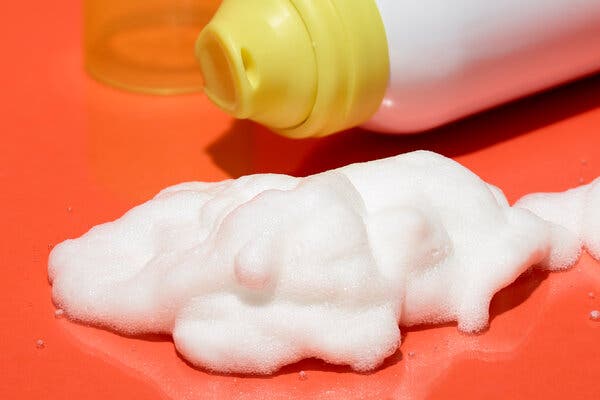This month, the Food and Drug Administration (FDA) sent warning letters to five companies marketing sunscreen mousses and foams, highlighting regulatory concerns.
Through a message posted on X, the FDA cautioned consumers to be wary of these innovative sunscreen formats, noting that their effectiveness has not been established. While the agency permits sunscreens in various forms such as sticks, sprays, powders, oils, gels, ointments, and butters, it has not authorized mousses or foams, which have recently gained popularity for their whipped texture.
According to a dermatologist at Northwestern Medicine, the FDA maintains strict definitions regarding what product forms can be marketed as sunscreens.
The warning letters were addressed to well-known brand Supergoop, along with K & Care Organics, Vacation Inc., Kalani Sunwear, and Fallien Cosmeceuticals. The FDA indicated these companies failed to meet regulatory requirements and promoted their mousse and foam products as providing sun protection or preventing sunburn. The agency has yet to receive sufficient data validating the safety or efficacy of sunscreen mousses.
However, experts emphasize that this does not inherently mean these foam or mousse sunscreens are ineffective. The regulatory evaluation is still ongoing, and the products have not been formally approved.
Since these formats are relatively new, medical professionals acknowledge the current lack of definitive evidence regarding their protective capabilities. The light, airy texture may appeal to users, but there is concern that such lightweight formulas might not provide full ultraviolet protection.
The foaming characteristic could also affect how well these products adhere to the skin compared to traditional sprays or lotions. Nonetheless, there is no indication that they pose safety risks.
Until the FDA formally approves these products, experts warn against assuming they offer reliable sun protection. That said, if manufacturers can prove their whipped sunscreens meet efficacy standards, it would expand consumer choices significantly.
In response, Supergoop stated that the FDA’s letter pertains to labeling issues and does not question the product’s safety, effectiveness, or formulation. Kalani Sunwear, headquartered in Sweden, temporarily halted sales of its sun mousse in the U.S. while reviewing the FDA’s requirements, clarifying the letter concerns regulatory classification rather than product safety or efficacy. Vacation Inc. expressed full confidence in their product’s safety and effectiveness. Fallien Cosmeceuticals and K & Care Organics did not provide comments.
Calls for innovation within the sunscreen industry have been growing among both healthcare professionals and consumers. A recently leaked draft of a White House report on children's health urged the FDA to encourage advancements in sunscreen formulations.
Ultimately, dermatologists agree that the most effective sunscreen is one that individuals will consistently apply.
Sunscreens are generally categorized into two types: mineral-based (physical) and chemical. Mineral sunscreens form a protective layer on the skin’s surface, reflecting ultraviolet rays and offering immediate protection, making them suitable for last-minute application. They are often recommended for sensitive skin since chemical ingredients may cause irritation. Mineral formulations also tend to have longer-lasting effects but can leave a visible white residue.
Chemical sunscreens, on the other hand, absorb ultraviolet radiation and typically do not leave a white film. However, they require about 20 to 30 minutes to fully absorb and become effective after application.
Both types can provide adequate protection when applied correctly and sufficiently.
Regardless of the sunscreen type, proper application is crucial. Spray sunscreens often result in product loss to the air rather than the skin. Experts recommend using sunscreens with at least SPF 30 and applying an amount roughly equivalent to a shot glass to ensure adequate coverage.


0 Comments
No comments yet. Be the first to comment!